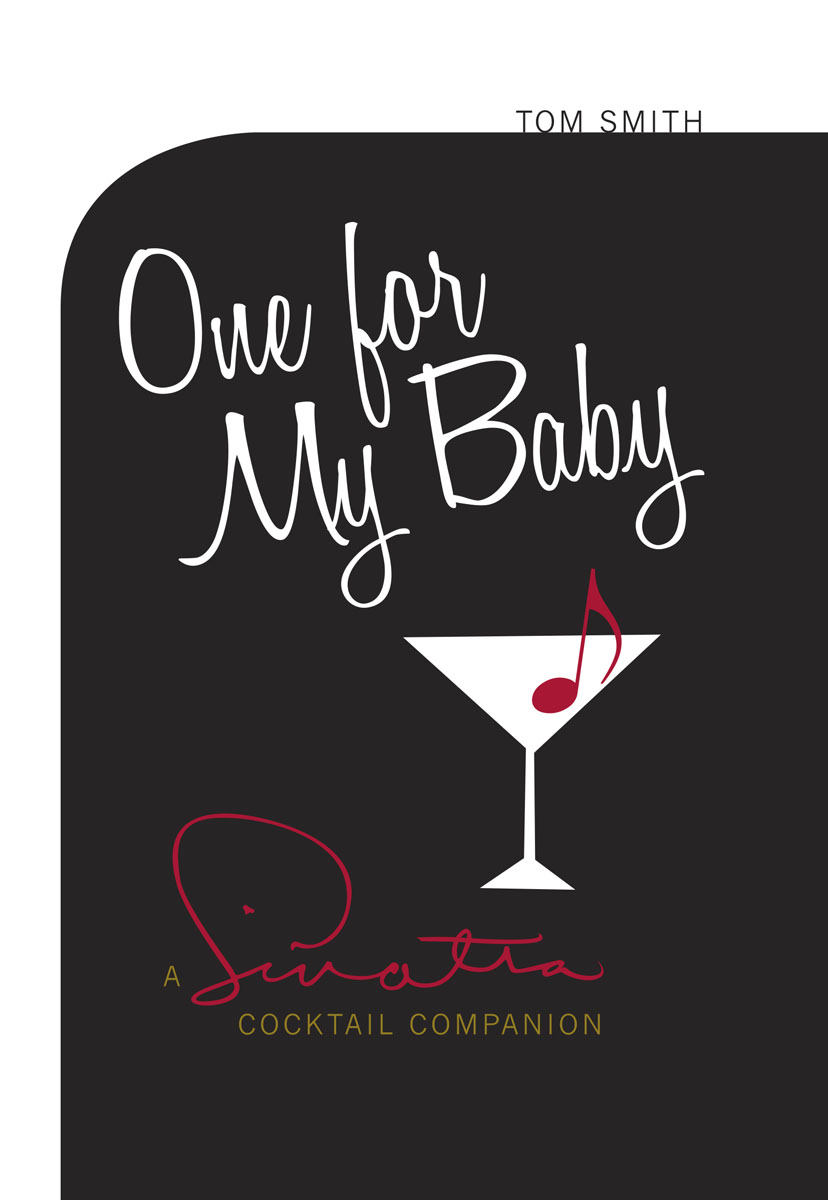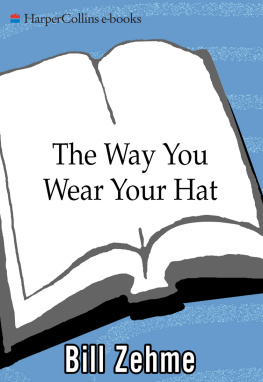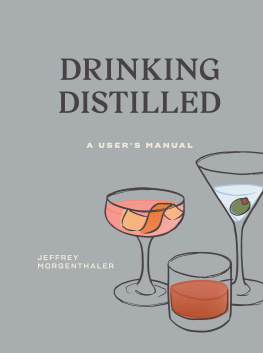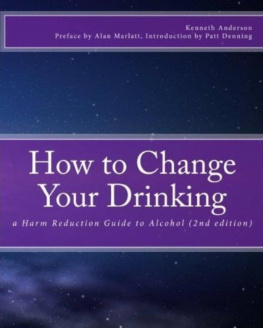
ONE FOR MY BABY
THIS IS THE STORY OF FRANK SINATRA WITH A TWIST: an account of his life and art from an unconventional point of view his prodigious appetite for alcohol. There are more than enough tales and anecdotes to make a compelling case that his fondness for booze was an integral element of his character, his lifestyle and his creative output.
The book doubles as a practical cocktail manual, containing over fifty recipes for preparing the fancy drinks associated with the singer and his entourage, as well as providing information on some of his personal drinking lore and traditions he followed or inspired.
There are accounts of Sinatras favourite watering holes and profiles of famous drinking buddies, such as Humphrey Bogart, Dean Martin, Sammy Davis Jr, Mike Romanoff, Joe E. Lewis and Jimmy Van Heusen, and a selection of drinking stories. The book opens with a consideration of his most enduring persona, the Last Saloon Singer, and ends with the Rat Pack. In between there are chapters on classic bourbon drinks, Sinatras especial partiality to Jack Daniels and Martinis, exotic booze combinations, hangover remedies and the people who kept him company through the wee small hours.
I was honoured to review this A fantastic book. Id love to open it on Christmas Day. I give every single cocktail ten out of ten.
Jill Adams, Louder Than Words festival organizer.
TOM SMITH performed with several cult bands in the 1980s and after some years as a manager for independent record labels became a freelance writer on musical subjects. He has written biographies on Blondie and the Ramones and is author of a BBC radio drama on the relationship between Harry Houdini and Sir Arthur Conan Doyle. His artwork has appeared on posters and record covers and his 2011 exhibition Jockey Full of Bourbon centred on paintings of Frank Sinatra, Elvis Presley and Tom Waits.
To Helen
All my love
All of it
Always

Preface
T his is a book that happily combines two of my abiding personal interests the music of Frank Sinatra and fancy drinks. These are two subjects that could be considered as concomitant. One for My Baby is a biography of Sinatra, but it is one that concentrates on a particular feature of his life his abiding relationship with alcohol. Of course, considering his life and times through his drinking is a conceit, but it is hardly the most fanciful of conceits. There are more than enough stories, anecdotes, myths, legends and facts to make a compelling case that his drinking was an integral part of his character, his lifestyle and, by extension, his creative output. His two most enduring personas Rat Pack leader and solitary small-hours drinker might seem diametrically opposed (the Chairman of the Board and the loser) but were united by the glasses in their hands. Alcohol was a constant throughout his life, and his devotion to drink outlasted any love affair. Only the music was more important.
Sinatra undoubtedly lived the lush life, and Billy Strayhorns skewed ballad on the subject could have been a much more fitting personal theme tune than My Way. Sinatra attempted Lush Life during the recording of Only the Lonely but abandoned the notoriously difficult song after several attempts, telling his piano player Bill Miller that he had decided to leave that one for Nat King Cole.
This book, then, traces some of that lush life and aims to give a flavour of it by detailing some of his personal drinking lore and outlining some of the traditions he followed or inspired. There are also accounts of some of his favourite watering holes from legendary saloons such as Toots Shors and Jillys to celebrity nightclubs like El Morocco and the Stork Club and profiles of famous drinking buddies, including Bogart, Dean and Sammy.
As well as informing the reader of where he drank and who he drank with, this book functions as a practical cocktail manual with instructions on how to construct, present and consume some of the fancy drinks Sinatra and companions were known to have enjoyed, from classic bourbon cocktails such as the Old Fashioned through to Smoked Martinis as well several favoured curatives for the inevitable alcoholic remorse, including Sinatras own ultimate hangover cure the Ramos Gin Fizz.
All of this knowledge may not grant you Frank-like status, but, late at night with a glass in your hand and one of his records playing, it might just feel like it.
Notes on the recipes and the drinks
In all of the recipes in this book a measure is equivalent to the larger cup on a standard American double jigger, that is, 1 US fluid oz. For more on this see Some Notes on the Particulars.
Whiskey/whisky: unless stated otherwise (Irish whiskey, for example) for the purposes of this book whiskey means bourbon, rye or Tennessee varieties; whisky from Scotland is referred to throughout as Scotch.
Vermouths: these have either a red- or white-wine base. The general rule is that red vermouth is sweet (and used for drinks such as the Manhattan) while white vermouth is by and large dry (although there are some popular sweet whites) and is used for Martinis.
Contents
For When You Could Use Some
Curatives for the Inevitable
Upmarket Watering Holes
The Rat Pack

Still a belter, baby! Sinatra on stage in 1970

The Last Saloon Singer
F rancis Albert Sinatra was born on 12 December 1915 and died on 15 May 1998. During his eighty-two years on this earth he structured a career that spanned six decades, became a cultural icon, movie star, business man and playboy, but above all he created a uniquely substantial body of recorded work, something like 18,000 recordings, many of which are lauded as performances of unparalleled textual and emotional depth. Impossible as it is for any single artist to embody all the popular music of the twentieth century, Sinatra came closest.
Big claims are made on his behalf: that he could raise pop artistry to a transcendent level; that his mastery of phrasing, rhythm, dynamics and, above all, interpretation, helped define how vocalists came to approach a song; that he changed not only how songs were performed but which songs were performed. He helped perfect the concept of the Great American Songbook, building up a repertoire of standards by the great American songwriters of the first half of the century and creating definitive versions of songs that came to be regarded as classics. He was by no means a modest man, yet he preferred a much simpler description of what he did. He was, he often insisted, a saloon singer.
According to Elwood P. Dowd, the hero of Mary Chases play Harvey (perhaps better known through the film starring James Stewart), nobody ever brings anything small into a bar. Patrons tend to have large problems or big dreams, and over drinks in the wee hours they will share them with you. Sinatra shared some of those stories whenever he requested the audience assume the position of a bartender. He called them saloon songs or drunk songs, woeful tales of loss sung by a man who owned mansions with swimming pools and helipads, Learjets with piano bars. They were heart-rending accounts of lonesomeness from an individual who was seldom alone and whose company could include some of the most glamorous and desirable men and women in the world. Yet he excelled at such songs and made the listener believe that he knew exactly how it felt to be one of the lost and the lonely.
Next page













